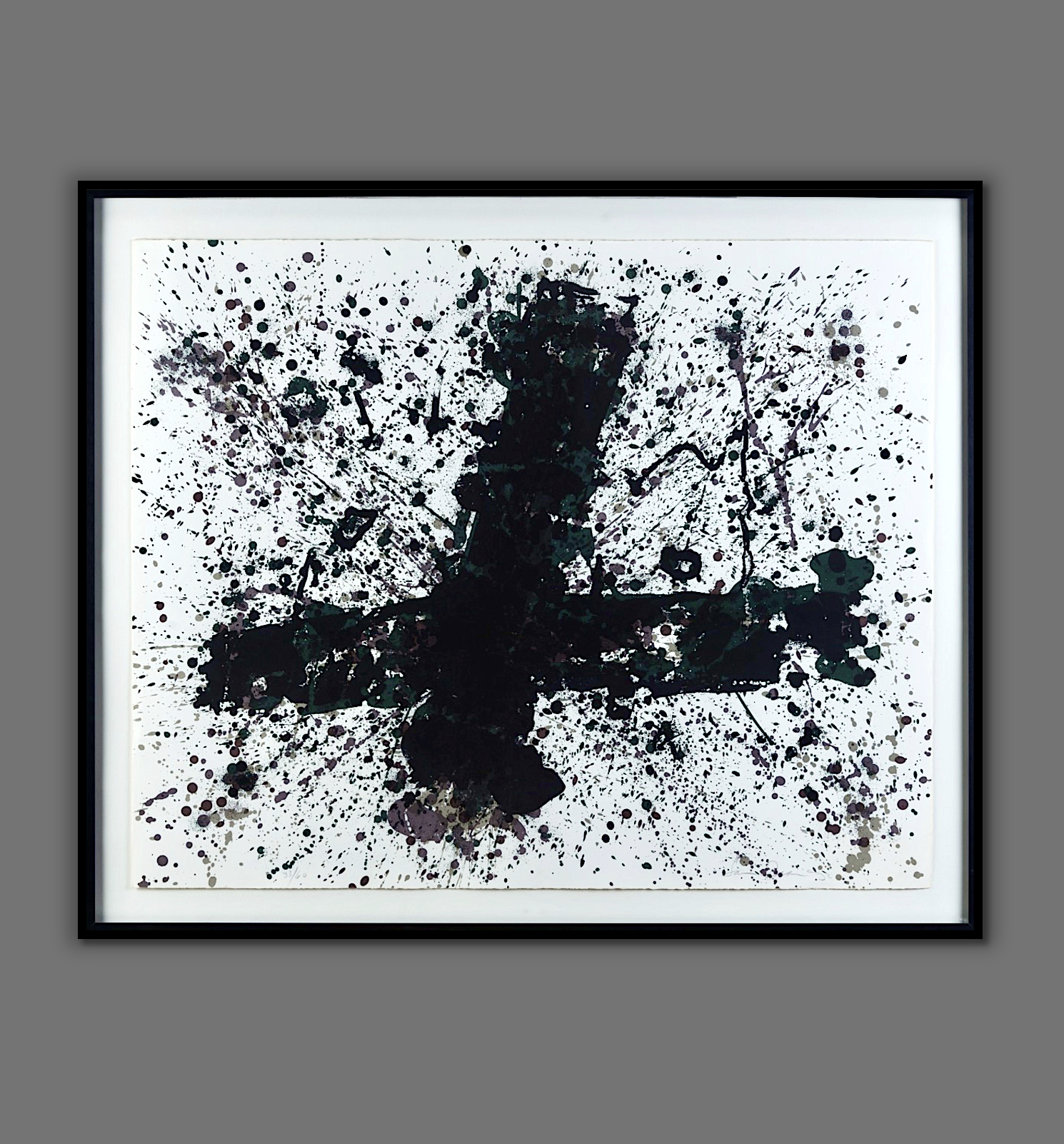

Title: Burnout 1973. Color screenprint Signed by artist Sam Francis
Shipping: $29.00
Artist: N/A
Period: Contemporary
History: Art
Origin: North America > United States
Condition: N/A
Item Date: N/A
Item ID: 1676
Sam Francis (American, 1923 - 1994) 30" x 37 ¼" sheet size "Burnout", 1973. Color screenprint on Arches 88 wove paper, signed in pencil lower right, numbered in pencil lower left 33/60, (there were also 10 artist's proofs), published by Gemini, G.E.L., Los Angeles, with their blindstamps lower right, float mounted in black frame, overall 34 ¼" x 41 ½". Condition: Very good, some creasing to the lower right corner. Abstract Expressionist artist Sam Francis saturated parts of his canvases with splashes and drips of paint, emphasizing the luminous voids he left uncovered. This contrast between vibrant color palettes and austere patches of white emphasized relationships of space, color, and light. Throughout his lifetime, Francis traveled extensively and drew inspiration from influences that ranged from Claude Monet’s “Water Lilies” to Jungian psychology and the aesthetics of Japanese Zen Buddhism. He has been the subject of dozens of exhibitions at major institutions and, in 1964, he featured at the 32nd Venice Biennale and Documenta 3. Today, Francis is represented in the permanent collections of the Centre Pompidou, the Metropolitan Museum of Art, and the Kunstmuseum Basel, among other institutions. On the secondary market, his work frequently commands seven figures.
“Burnout” (1973) by Sam Francis is a striking color screenprint that captures the artist’s signature exploration of energy, emotion, and spatial tension through abstraction. Vivid bursts of pigment—reds, blues, and yellows—seem to explode against areas of stark white, creating a visual rhythm that feels both chaotic and controlled. The title “Burnout” suggests exhaustion or collapse, yet the work itself pulses with vitality, as if the artist were translating psychological strain into pure, visual form. Francis often used color as a language of emotion, and here he balances intensity with emptiness, motion with stillness—reflecting both the physical and spiritual toll of creation. The piece embodies his belief that painting is a direct extension of human experience—an expressive act that records the flicker between destruction and renewal.